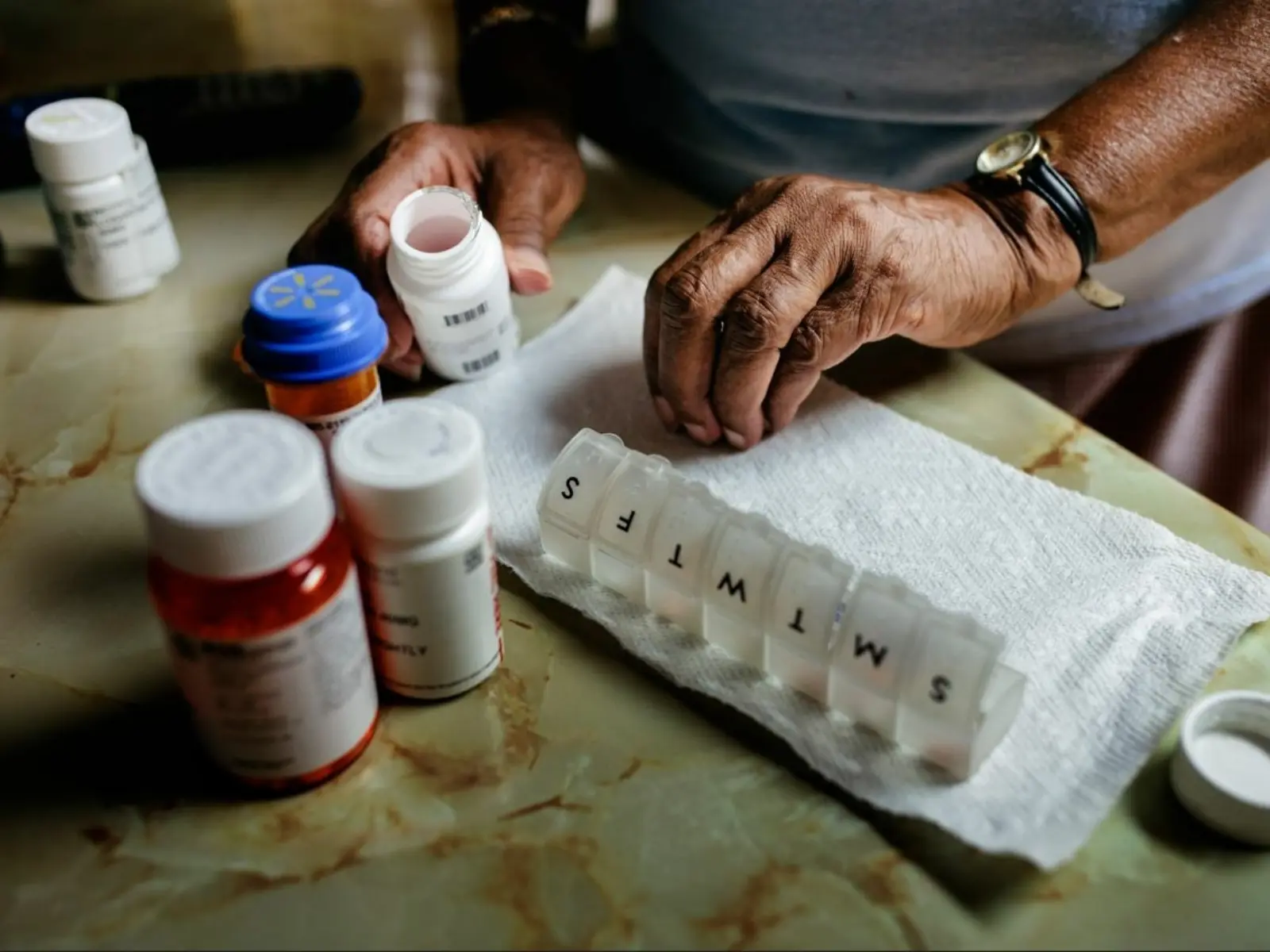When Minnesota passed a law last year requiring that drug companies supply insulin to those who couldn’t afford it, it became the latest in a growing coalition of states moving forward with aggressive action against an industry that has propagated expensive prescription drugs.
With Congress gridlocked in 2020 — and the pandemic dominating the federal agenda — states have accelerated their efforts to take action against drug companies and industry middlemen in order to drive down costs so prescription drugs are more accessible and affordable for everyone.
The pharmaceutical industry is not happy.
Just hours after Minnesota’s Alec Smith Insulin Affordability Act took effect, an effort spurred forward by Arnold Ventures grantee T1 International, the pharmaceutical lobbying group Pharmaceutical Research and Manufacturers of America filed a federal lawsuit, claiming the law — named in memory of Alec Smith who died at age 26 from insulin rationing — was unconstitutional and seeking a permanent injunction.
“Today — the very day our law finally takes effect so that no Minnesotan needs to die because they can’t afford the astronomical cost of insulin — is the day that Big Pharma chooses to sue to block the law,” Minnesota’s Attorney General Keith Ellison said in a statement. “Today — the very day that our state finally put Minnesotans’ lives ahead of drug companies’ profits — Big Pharma is telling Minnesotans that their obscene profits come before your lives.”
“It was like a punch in the gut. The whole state celebrated the passage of the Alec Smith Emergency Insulin Act,” said Kenza Hadj-Moussa, spokesperson for TakeAction Minnesota. “Our governor said in that moment that Big Pharma was hated even more than COVID-19.” If the suit was an attempt to slow Minnesota’s reform movement, it had the opposite effect: galvanizing state lawmakers to take pursue even more aggressive action to lower drug prices. This year, lawmakers are bringing forward additional reform ideas, including a prescription drug affordability board bill and a price-gouging policy.
“We learned our lesson that it is best to keep pushing forward,” Hadj-Moussa said. “The role of our elected officials is to carry out the will of the people. Minnesotans are struggling to afford medicine they need to stay alive and well. State leaders have the authority and responsibility to act.”
As state legislatures convene this year, reining in expensive prescription drug prices is high on the agenda in 2021 as lawmakers react to growing clamor from their constituents for relief.
The policy proposals are varied — some states are seeking to implement prescription drug affordability boards, independent panels that evaluate drug prices and set upper payment limits. Other states are eying even more ambitious reforms, such as capping reimbursements for drugs at the much lower level paid in higher-income countries.
But the surging interest in prescription drug pricing reform among states is quickly becoming a groundswell.
“We know that prescription drugs don’t work if you can’t afford them, and that’s a heartbreaking reality affecting so many families right now who are suffering from the dual crises of the pandemic and economic slowdown,” said Andrea Noda, director of drug pricing at Arnold Ventures. “The good news is that states have the ability, the authority and the appetite to meaningfully lower prescription drug prices and create more affordable and equitable health care at a time when it’s needed most.”
Feeling the Pain
Prescription drug prices have been rapidly rising in recent years, waging a toll on on individual households and creating financial damage for city, county and state budgets, a growing trend that has captured the attention of state lawmakers.
In Maryland, prescription drug costs have strained local budgets. Republican County Executive Barry Glassman of Harford County has reported that his small, rural county’s budget is being stretched by high cost drugs for local employees; for example, in 2017, 72 prescriptions cost his county budget $680,000 out of a total of $6.7 million spent on medications.
In New Mexico, nearly half (44 percent) of New Mexicans said they skipped their medications and 90 percent expressed concern about the cost of their drugs.
“Until now, big drug companies have been the only businesses in the health care industry whose rates are not regulated. The Legislature can and must act to hold them accountable,” wrote New Mexico State Rep. Angelia Rubio in an op-ed announcing the introduction legislation that would establish a prescription drug affordability board.
While the pharmaceutical industry spent most of 2020 working to burnish its reputation in the race to develop COVID-19 vaccines and treatments and beat back regulatory attempts, Americans remained steadfast in their demands for more affordable drugs. In a recent survey, 87 percent of Americans said that lowering drug prices should be one of the federal government’s top priorities (ranking a close second to COVID-19 relief), according to a poll by the Harvard T.H. Chan School of Public Health and Politico.
Amount of Americans surveyed who said lowering drug prices should be one of the federal government’s top priorities
In Colorado, where one in 10 people, on average, has skipped medication because of cost, the Colorado Consumer Health Initiative wrote in an appeal to lawmakers that the pandemic has pushed affordability to the forefront.
“Getting drug costs under control must be a priority in Colorado, now more than ever as the COVID-19 pandemic has heightened the importance of maintaining good health, and further strained the budgets of Coloradoans who were already struggling to afford rising costs of living and health care,” the group said.
Spurred forward by looming budget deficits and constituents demanding relief for high health care costs, state lawmakers have been increasing their scrutiny on prescription drug prices.
But where to begin?
Model Policies
Amid surging state-level interest in regulating drug prices, the National Academy of State Health Policy (NASHP), a health care advocacy group and Arnold Ventures grantee, has stepped up to help guide policymakers, developed a set of model policies that states could implement to lower drug prices and hold the pharmaceutical industry accountable.
One idea that has gained steam: Prescription drug affordability boards (PDABs), an independent, regulatory body charged with examining drug prices and, in some cases, establishing reimbursement caps for government purchasers.
Think of a PDAB like the third-party agencies that regulate monopolistic state utilities, except instead of electricity or water rates, PDABs oversee the affordability of high cost drugs, said longtime healthcare advocate Vinny DeMarco of Maryland.
The concept has received wide support, including from the NAACP, which passed a resolution last year calling for the establishment of a board in every state to make drugs more affordable as part of a broader effort to address racial disparities in health care.
Maryland in 2019 became the first state to implement a PDAB. Its board is tasked with identifying unaffordable drugs, reviewing their costs, and eventually, with approval from the state legislative leaders, working to set upper payment limits for public payers. The PDAB is also required to submit a plan to the Maryland General Assembly on how to make high cost drugs more affordable for all Marylanders
Since the formation of Maryland’s PDAB, five other states — Maine, Massachusetts, New Hampshire, New York, and Ohio — have enacted legislation to create drug affordability boards, and a nearly a dozen more are pursuing the concept, including New Jersey.
“We’ve worked hard to expand coverage and provide assistance to those who cannot afford health care, but the price of health care services continues to be a primary driver of rising costs,” said Maura Collinsgru, health policy advocate at New Jersey Citizen Action. “Lowering prescription drugs is the next logical step, and one that can have great impact.”
With surveys showing that one out of every five New Jersey residents forgoing filling their prescriptions because of cost — and drug costs gobbling up 13 percent of the state’s Medicaid budget, Collinsgru said — lawmakers have introduced bills to establish a prescription drug affordability board.
“It’s the one policy that gets directly at the cost and provides the transparency needed to institute additional and lasting reform to rein in the high cost of prescription drugs for all New Jersey residents,” Collinsgru said.
In mid-2020, NASHP released additional policies for states to expand their reforms if they desired.
One idea is often referred to as International Pricing index (IPI), a proposal that would allow states to link prices on some of the most expensive medications to the much lower prices paid in other countries, including neighboring Canada.
The potential savings are substantial. For example, the popular anti-inflammatory drug Humira — commonly used to treat arthritis, psoriasis and Crohn’s disease — costs about $2,700 for a 40 mg syringe in the United States; the same drug and dose costs 80 percent less in Canada at $541.
Five states — including Maine, Oklahoma, North Dakota, Rhode Island and Hawaii — have bills on the table that would allow them to set upper payment limits for prescription drugs. One analysis by NASHP found that a state could generate more than $32 million in savings by establishing limits on just 35 drugs purchased for state employees.
Other NASHP model policies include legislation that would allow states to penalize drug companies for increasing prices twice as much as medical inflation without justification from new clinical data; empowering states to stop excessive and unconscionable prices for prescription drugs and licensing state pharmaceutical representatives, requiring them to undergo professional education and disclose to providers the costs of the drugs they are marketing.
Pharma Scrambles
The rising tide of state drug pricing reforms has unsettled the pharmaceutical industry. In response, PhRMA has filed a rash of legal action against states.
After suing to stop Minnesota’s insulin bill in mid-2020, the lobbying group filed a federal suit in November seeking to stop a federal importation rule that allowed states to bring in less-expensive drugs from Canada. (Canada, in response to the rule, has banned mass exports of prescription drugs to protect its national supply). At the time of the suit, four states — Vermont, Maine, Colorado and Florida — had already submitted their plans for importation.
But pharma’s legal challenges may not be enough to slow state momentum.
“States are eager to do what it takes to provide the financial relief that patients, employers and taxpayers deserve,” Noda said.
















